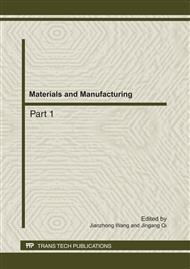p.891
p.895
p.899
p.904
p.908
p.912
p.917
p.921
p.925
Weld Width Control System for Pulsed MIG Welding of Aluminum Alloy
Abstract:
Due to strong heat accumulation and low surface tension of aluminum alloy, weld width will become wider, even subsidence in pulsed MIG welding process of aluminum alloy at constant parameters. A variable double-pulse method for weld width control is proposed. Weld width control is realized by changing double-pulse duty cycle that is the ratio of high-energy pulse time in a double-pulse cycle to adjust heat input based on the vision sensing for weld width. A rapid prototyping control system is built on the basis of vision sensing and xPC Target real-time environment. Then variable double-pulse MIG welding process test is done and proves the feasibility of the control scheme. On this basis, weld width control test in pulsed MIG welding of aluminum alloy is carried out and obtains a good weld with beautiful formation and uniform weld width. The results show that weld width control can be realized well with the variable double-pulse method in pulsed MIG welding of aluminum alloy.
Info:
Periodical:
Pages:
908-911
Citation:
Online since:
July 2011
Authors:
Keywords:
Price:
Сopyright:
© 2011 Trans Tech Publications Ltd. All Rights Reserved
Share:
Citation:


